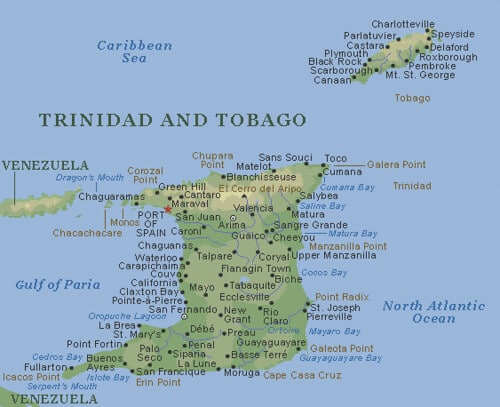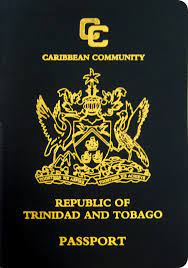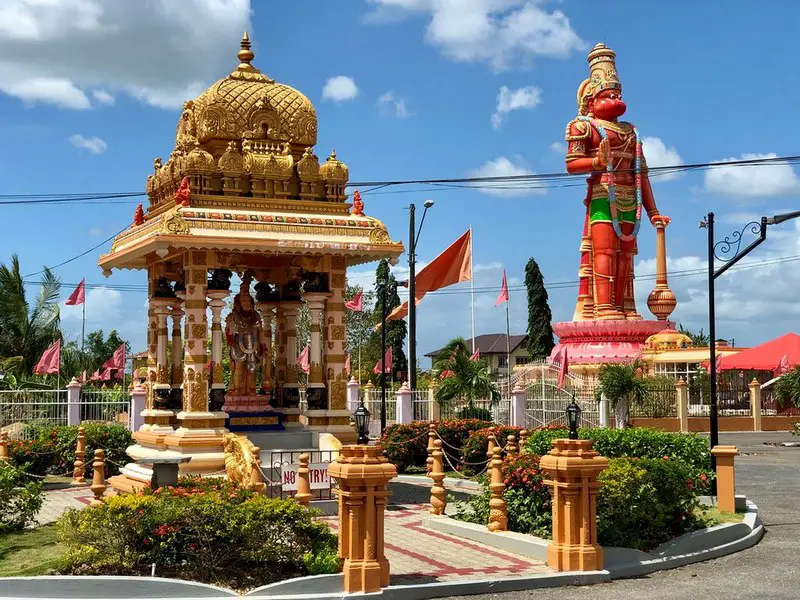.png) | WELCOME TO THE TRINIDAD & TOBAGO ASSOCIATION OF WASHINGTON D.C., INC. |
DID YOU KNOW |
Trinidad and Tobago: The Awesome Caribbean TWIN Island NATIONBy Jian Brant|May 29th, 2021|Lifestyle Trinidad and Tobago is a Caribbean island nation that offers tourists many opportunities for fun in the sun. The country has some of the most beautiful beaches in the world, which are perfect for those looking to relax on their vacations. Trinidad and Tobago also has a diverse range of wildlife that is unique to the country so there’s plenty of room to explore nature as well! Geography
Trinidad and Tobago is an archipelago in the southern-most part of the Caribbean, sharing maritime boundaries with Venezuela, Grenada and Barbados. The country’s capital city is ‘Port-of-Spain’. Area: Trinidad has a total area of 5,128 square kilometers (1,980 square miles) Climate: Weather in Trinidad and Tobago is usually very predictable as the country has a tropical climate with the temperatures varying between 18°C and 35°C. There are only two seasons: the dry season, from December to April and the wet season which lasts through November.
Economy The economy is heavily dependent on oil and gas production. Trinidad is also a tourism destination for those seeking out beautiful beaches, delicious cuisine, and rich cultural experiences. Currency: The currency used in Trinidad and Tobago is the Trinidadian dollar (TTD)
Population Trinidad and Tobago has a population of around 1.4 million people, many of which are descendants from African slaves who were brought over centuries ago by European settlers. The country also has East Indian, Chinese, French Creole, Lebanese-Syrian roots among others. Language and ReligionEnglish is the official language in Trinidad and Tobago. With the influx of Venezuelan migrants, Spanish is slowly becoming more prominent as a spoken language in Trinidad. Christianity is the major religion with Catholicism being practiced by most Trinidadians. Other religions include Hinduism, Islam and other Christian denominations (such as Presbyterian). History and CultureTrinidad was colonized in the 16th century by Spanish settlers. The country became a British colony after 1797, and then was granted independence on 31 August 1962. Trinidad’s culture is largely based around music like calypso and soca, as well as steel pan (the latter being exported to many other countries). Trinidadians also have a lot of pride for their Carnival celebrations which are one part entertainment but another part an expression of religious beliefs with folk traditions dating back hundreds of years.
The food they eat includes dishes such as curried goat or chicken roti along with rice and peas; flat breads called ‘buss-up shot’; and street food called ‘doubles’. Food in T&T is usually well seasoned with chadon beni and garlic, among other ingredients. Interesting Facts about Trinidad and TobagoTrinidad and Tobago is the only country in the world named after a twin island. Trinidad’s culture is largely based around music like Soca, Calypso and Steel Pan music. T&T also has a rich heritage of stories such as the folklore of ‘La Diablesse’ who is said to roam in search for victims on moonless nights. Tobago was largely spared from slavery but was taken over by Great Britain during the Napoleonic Wars after which it became its own colony by 1814 when most plantations were abandoned due to soil exhaustion with some exceptions still existing today including Mount Irvine Bay Estate. In 1962, Trinidad & Tobago hoisted its own flag as it gained independence from British rule and not too long after this T&T joined the West Indies Federation which collapsed in 1962. Later, Trinidad and Tobago joined the Commonwealth of Nations. In 1976, T&T became a republic with Sir Ellis Clarke (1917–2010) as its first president. The country has gone through many changes over time but is still today one of the most diverse places on earth that’s home to Afro, Indo, Chinese and European descendants as well as Amerindian bloodlines. Trinidad Carnival known as the ‘Greatest Show on Earth’ is held every year to commemorate Trinidadian African culture and heritage. |


